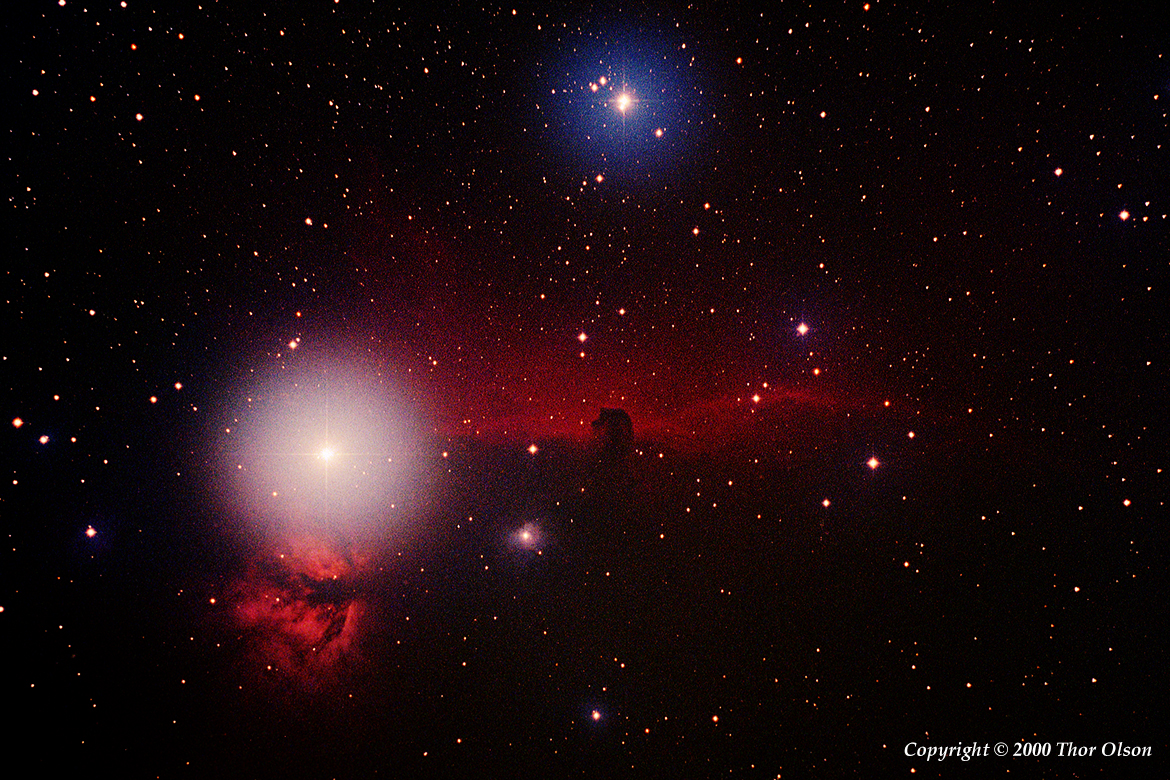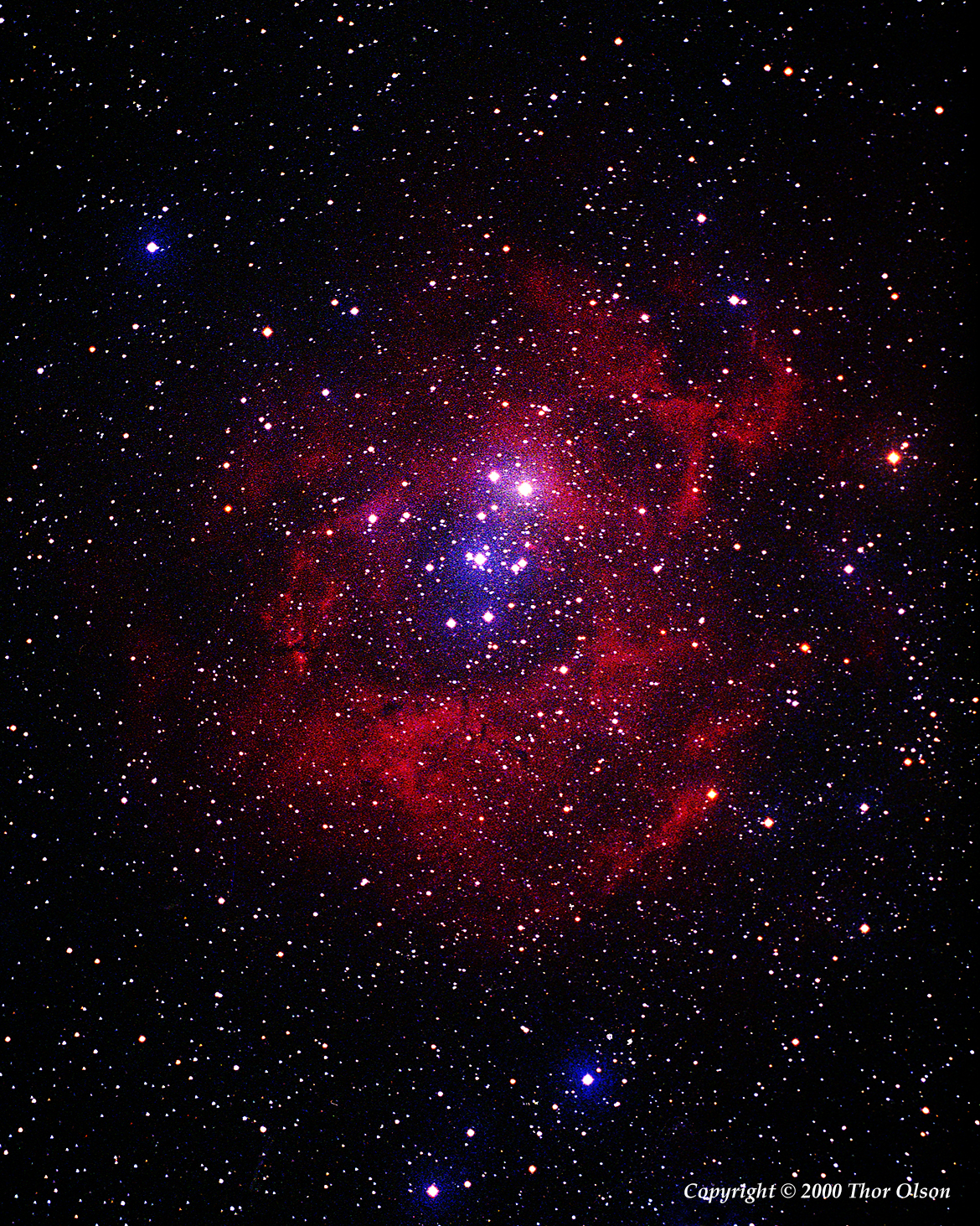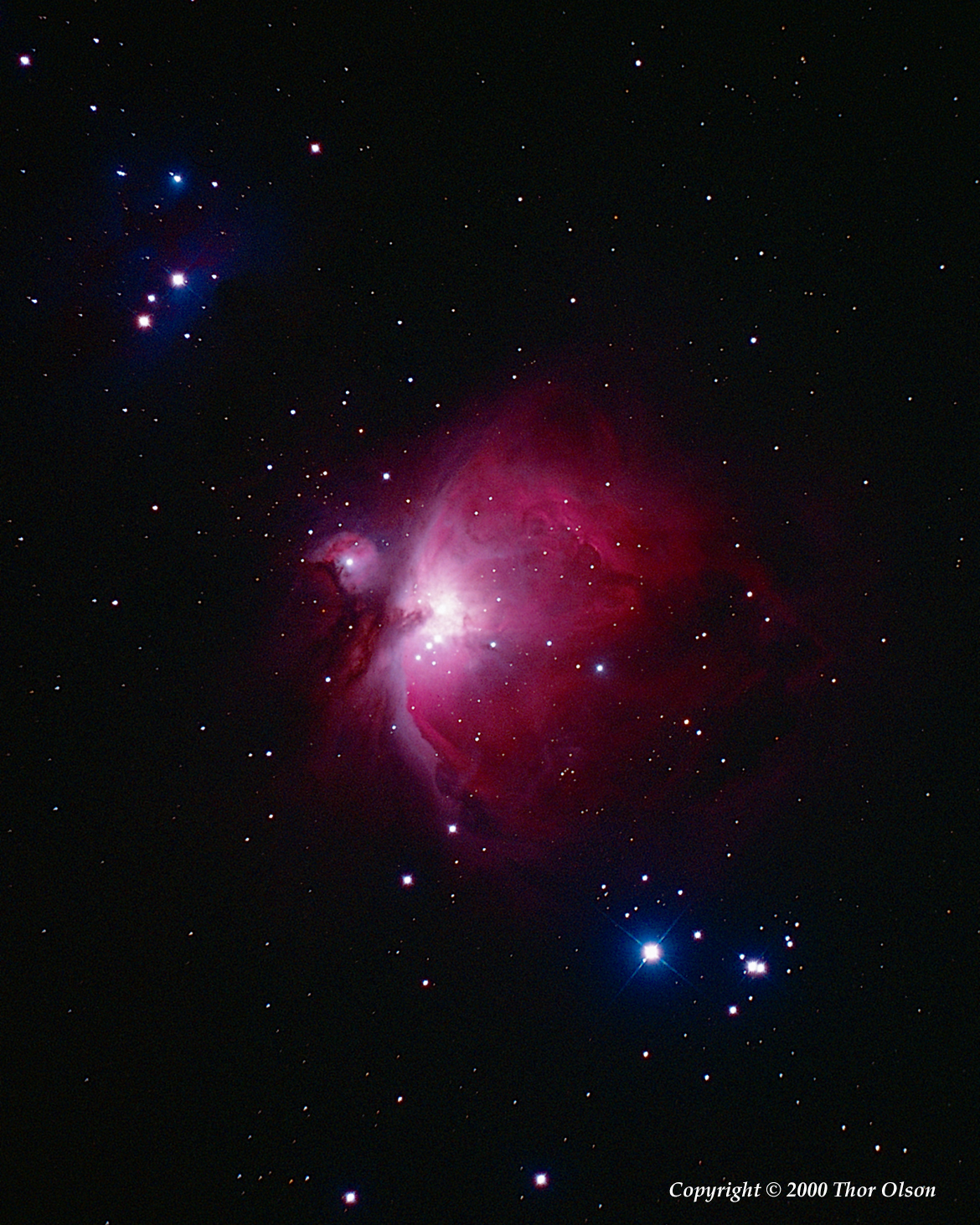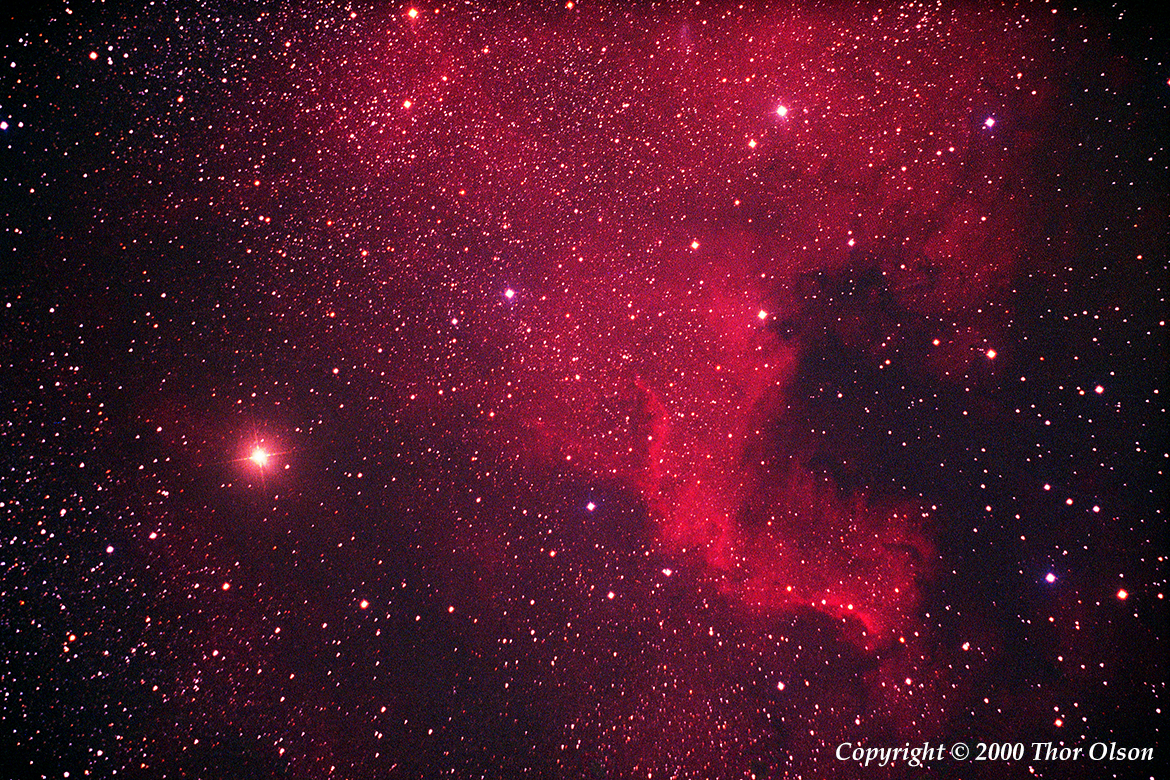
Portage Lake, MN, 25 Nov 2000
20-minutes at f/4, Kodak PJ400 color negative film, pushed 1 stop
This is a favorite target for astrophotographers. It’s a famous image, but quite challenging to capture, partly because it is only visible during the winter months when Orion the Hunter is up. The weather conditions will always be cold, at least in the northern latitudes, and so winter gear is required.
It is not easy to actually see this target. The nearby bright star, zeta Orionis, is a convenient marker, but its glare easily washes out the faint glow of the Horsehead and another nearby object just below zeta, the “Flame Nebula”.



